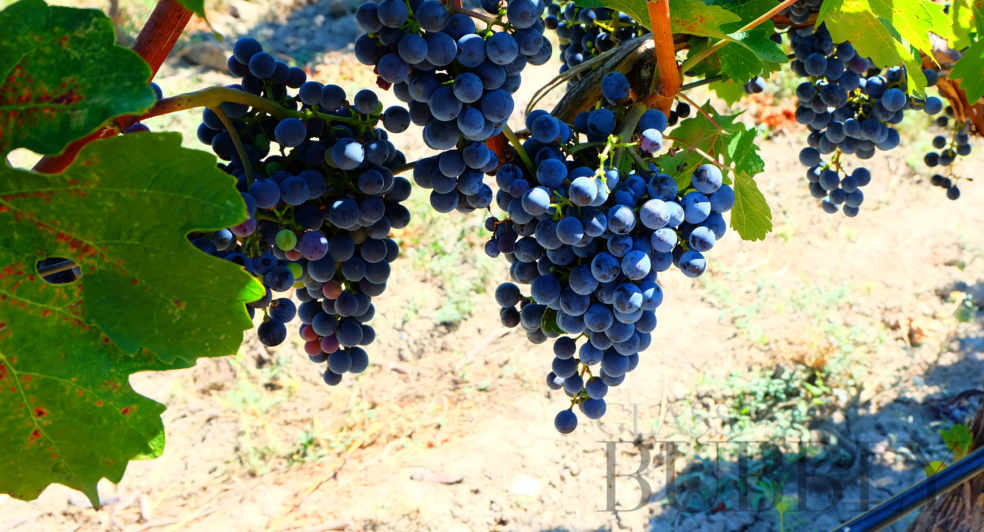Understanding Pinot Meunier
15th January 2025

A long time ago, one of my WSET teachers told me that wine was about mood. How much you enjoyed a wine, he said, depended on the context in which you were drinking it.
This might explain why the last rosé I enjoyed was before the Millennium, when I shared a bottle on a hotel balcony overlooking the bay at Villefranche-sur-Mer on the south coast of France. It was a magical summer evening, with the lights from the surrounding shores shining on the water and serving as a majestic backdrop. Since then, no rosé has come close.
It might also explain why I was a little underwhelmed by a bottle of Serveaux Fils Pur Meunier Brut Champagne this month. Objectively, it’s very good. I’d had it a few weeks beforehand at a tasting, and really enjoyed the lovely autolytic character, ample body and streak of acidity. On a wet and grim December night in Edinburgh, however, I couldn’t get excited about it, despite the four years it had spent on the lees and the excellent price point. (Even so, my friend and I did ‘tan’ the whole bottle, to use a bit of Scottish slang.)
Serveaux Fils makes another hundred percent Meunier Champagne, which is truly delicious. I know this for sure because I opened a good bottle of white Chinon afterwards, which was totally destroyed by the lingering flavours from the Champagne. The Meunier d’Antan Extra Brut is a blend of two vintages and is aged for even longer (five years) than the Pur Meunier, from grapes grown on limestone rather than on clay. On the palate, it was a riot of pastry – like a tarte tatin, in the view of one of my tasting partners. As with the Pur Meunier, there was a lot of acidity, which is not surprising considering there was no malolactic fermentation and the residual sugar amounted to just 2 grammes per litre. It’s a really excellent wine and great value.
Meunier is of course the least glamorous of the three Champagne grapes. Its place in the pecking order is evident from the minor role it plays in many of the most famous Champagnes: Bollinger’s Special Cuvée includes only 15% Meunier, Veuve Clicquot’s Brut yellow label has 20%, while there’s 25% in Taittinger’s Brut Réserve. At the Prestige Cuvée level, Meunier hardly gets a look in. The 2015 vintage of Dom Pérignon and Clicquot’s La Grande Dame, both of which are blends of grapes, are Meunier-free, although Krug’s Grande Cuvée does contain 20%.
So what does Meunier have to recommend it to lovers of sparkling wine? According to my French book of wine grapes, it brings yellow fruits (peach, apricot), greengage and ripe apple, as well as body, to the blend. Most of that sounds appealing, although I did raise my eyebrows when I saw the word greengage on the page, for it sounded a bit too reminiscent of Bacchus (one of my least favourite grapes). My friends agreed with the yellow fruit and apple descriptors when they tried the two 100% Meuniers by Serveaux Fils, although I couldn’t see beyond the autolysis.
According to the Comité Champagne, Meunier is better adapted to harsh weather than its more illustrious counterparts. It has the advantage of budding later than Chardonnay and Pinot Noir, rendering it less vulnerable to the frosts that are an annual danger so far north in France. Indeed, several days of frost in April, along with other weather-related challenges like mildew and hail, had a negative impact on volumes in 2024 in Champagne.
Even further north, of course, is England. You’d think, bearing its hardiness in mind, that Meunier would be a reliable choice for producers in the southern counties making sparkling wine. I asked Tommy Grimshaw, the head winemaker at Langham Wine Estate in Dorset, about this. He commented that it “depends on how you define reliable”. While the more famous Champagne grapes “are harder to grow” and Meunier “does seem less affected [by the weather] on a year by year yield basis”, it’s less frequently “the star of the show”. Pinot Noir and Chardonnay are often “more expressive”, but he still considers Meunier an “essential” part of the blend.
Indeed, Langham released a 100% Meunier in both 2017 and 2018.
For a very long time, I have drunk much more red wine than sparkling. My experience with the Meunier d’Antan Champagne may lead me to reconsider this preference. I’m not certain it’s enough to make me buy a 100% Pinot Meunier rosé though.
![]()
Michael Walker
Works at Vino Wines in Edinburgh and writes a travel and wine blog called The Narrow Corner.
